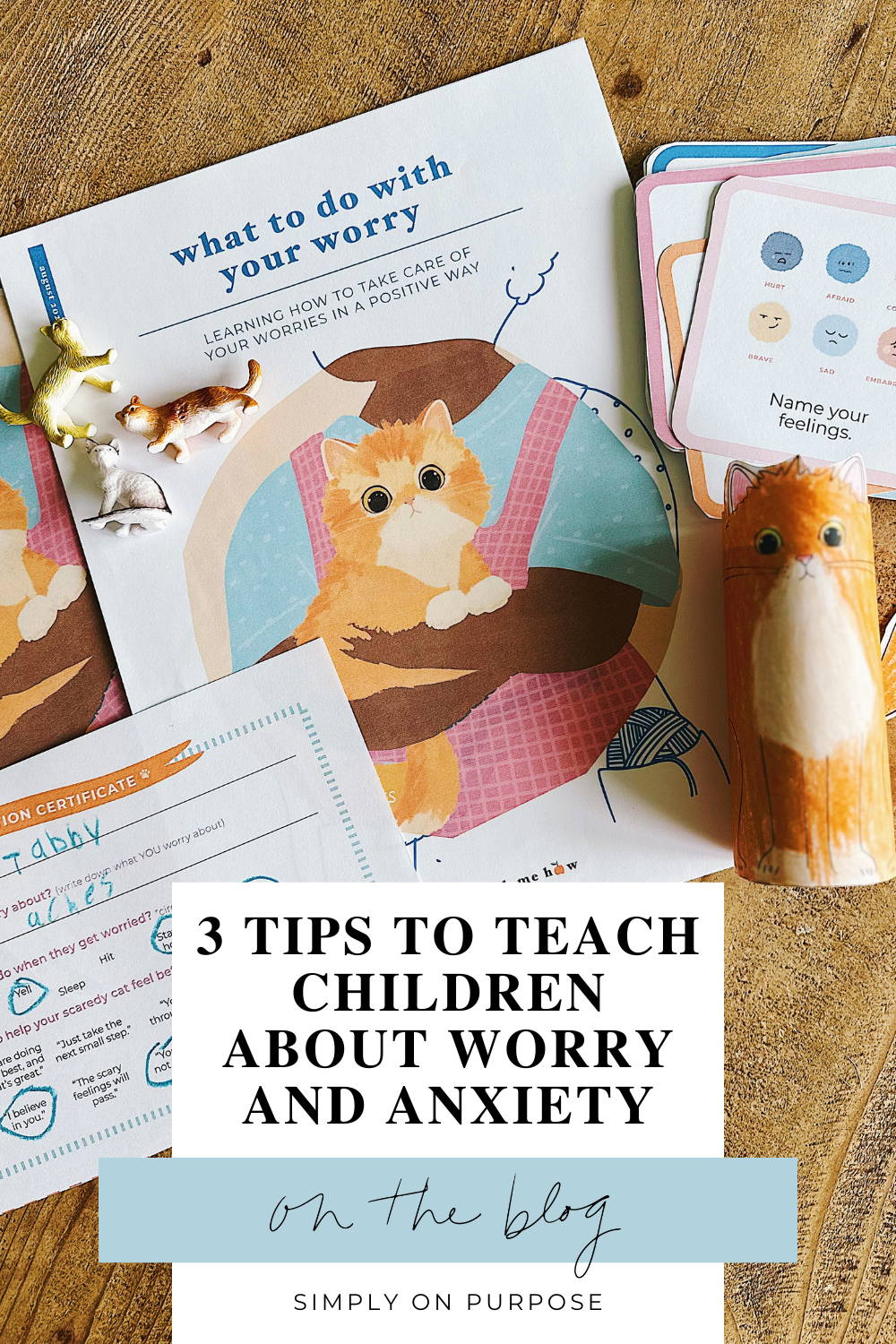One of the most challenging moments of being a parent is watching your child struggle with worry or anxiety and not knowing exactly how to help. While we can’t prevent every anxious moment, we can teach our kids tools that empower them to handle big feelings in healthy ways. Here are three simple, effective tips to help you guide your child through worry—and build emotional resilience together.
1. Focus on the Five Senses
Anxiety pulls us into our thoughts. For kids, that can look like spiraling worries, fear of what might happen, or physical symptoms like stomachaches. A quick way to interrupt this spiral is to bring them back into the present moment using their senses.
This technique is simple but powerful. Ask your child to name:
- 5 things they can see
- 4 things they can touch
- 3 things they can hear
- 2 things they can smell
- 1 thing they can taste
This “5-4-3-2-1” grounding exercise helps your child shift their focus away from anxious thoughts and back into their body. It’s especially helpful during panic or overwhelm and it works well alongside breathing techniques. Practice this together in calm moments so it becomes familiar when stress arises.
2. Teach Coping Skills Early
Kids aren’t born knowing how to calm themselves down when they’re overwhelmed. They need to be taught—just like we teach them to tie their shoes or brush their teeth. One of the best ways to do this is by practicing coping strategies regularly, before worry takes over.
To make this easier, I created a digital set of 24 Coping Skills Cards—a collection of child-friendly activities designed to help kids calm their bodies and minds when they’re feeling anxious. These cards include simple ideas like:
- Hugging someone
- Drawing a picture
- Running cold water over your hands
- Listening to calming music
- Acting out your worries with puppets
They’re a great tool to keep in a calm-down corner, to use during transitions, or to incorporate into your daily routine. You can even let your child pick a card each morning or when you notice signs of stress. The more they practice these skills, the more likely they’ll use them independently when big feelings hit.
These cards are part of my digital resource, “What To Do With Your Worry: Learning How to Take Care of Your Worries in a Positive Way.” This printable includes:
- A lesson to help your child separate their worry from themselves (and give it a name!)
- 24 coping skills cards to help them break the worry loop
- Role plays to practice caring for your worry and speaking kindly to yourself
- Discussion questions to help them recognize how they feel worry
- Extension activity ideas, and more!
3. Normalize Worry (But Don’t Let It Take Charge)
Many children think worry is bad—or that they’re the only ones who feel this way. Reassure your child that everyone worries sometimes, even grown ups! Worry is a normal emotion, and it’s often our brain’s way of trying to protect us.
However, it’s important to teach kids that worry doesn’t get to be the boss. You can say things like, “Worry is trying to keep you safe, but we don’t need to listen to it right now.”
Use stories, role plays, or books to talk about worry as a character—something they can talk back to, question, or quiet with the skills they’re learning. When we name it and talk about it, worry becomes less scary and easier to manage.
If you would like more resources about anxiety and emotions, you might like these resources:
- Helping Your Anxious Child – On-Demand Parenting Webinar
- 5 Strategies to Help Your Anxious Child with Transitions
- 10 Books That Teach Your Child About Emotions
